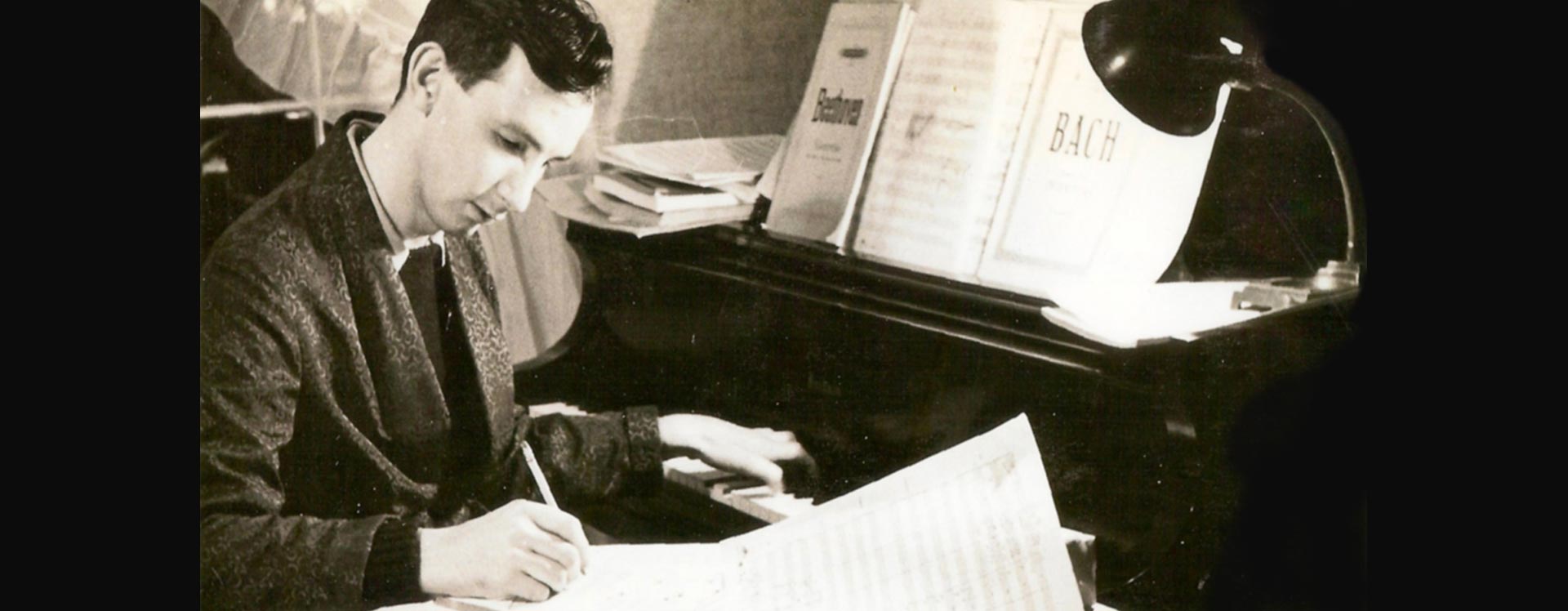

Recommended: Listen on headphones or external speakers.
0:00-0.17 – Utilizing the four-player reed section for the first time with Norvo, Sauter provides the melody a rich setting with four-part harmony on the first A sections of the AABA tune in D major.
0:34 – The opening is followed by a solo trumpet on the bridge.
0:50 – The brass takes the melody on the closing A sections while the saxes supply a lush counter-melody.
1:02 – The melody segues into an interlude that cleverly modulates to the key of F major.
1:15 – During the F major section, Red Norvo is given some unusual chords to solo upon, a preferred setting for the mallet player.
2:22 – Another modulation occurs on beat 2 of the last measure of Norvo's solo chorus.
2:23 – The final chorus of the melody is in the key of Db major. The facility of "surprise" or unusual changes of key is a trademark of Sauter's arrangements that would occur during many of his arrangements over the next four decades of his career.
Back to Red Norvo
0:00-1:06 – The opening features Cootie Williams improvising with a plunger mute over what sounds like an accompaniment figure performed in the low saxes and trombones but is actually the first part of the song's first theme.
1:06 – After the initial reference to "Sing, Sing, Sing," Sauter's instrumental feature presents Goodman with an opportunity to trade phrases with the band.
1:57 – Following the musical dialogue, Sauter unexpectedly changes the mood to a much more delicate classical-sounding theme. Here, the sax harmonies are particularly lush.
2:56 – The sweeter side of Goodman's sound becomes more apparent as he combines ensemble playing with improvised passages atop staccato sax figures.
3:44 – The build-up with the re-appearance of the brass is executed ingeniously.
4:30 – As are the repeated, dissonant, and striking minor-major chords on which the song ends.
Back to Benny Goodman
0:00-1:30 – The piece opens with a harmonically complex and frequently modulating development section.
1:30 – It flirts with oscillations between minor and major as many of Sauter's arrangements for Goodman had done.
2:15 – In the coda, the brass ends on the tonic chord (F major). Juxtaposed against this, the saxophones play an unprecedented classically-inspired melodic idea in F# minor.
2:45 – The sax melody eventually wins out after that spell of bitonality.
Back to Ray McKinley
0:00-00:18 – "Night Rider" reveals Sauter's ability to turn the string section into a driving mechanism with rhythmic propulsion. Sauter employs the "hocket" technique he had mastered during his time with Goodman and with other big bands to create a persistent eighth-note pulse performed on double-stopped, pizzicato open-fifths by the violas and celli. The violas take the downbeats and the cellis play on the upbeats.
0:18-0:52 – The violins enter with pickups to the nineteenth measure that continue the undulating forward motion.
0:52 – Playing over the pedals created by the lower strings, the violins superimpose several chords over the G-minor pedal.
1:10 – The constant pizzicato eighth notes stop when an expansive G major chord appears in all voices of the orchestra in unison rhythm.
1:10 – This chord and subsequent tutti chords lead to two perfect solo breaks for Getz.
1:28 – 5/4 and 6/4 sections ensue, followed by a return to the original thematic material stated in measure 19 (at 2:48).
The effect that Sauter draws out of the string ensemble on this movement is has incredible energy and force.
Back to Focus